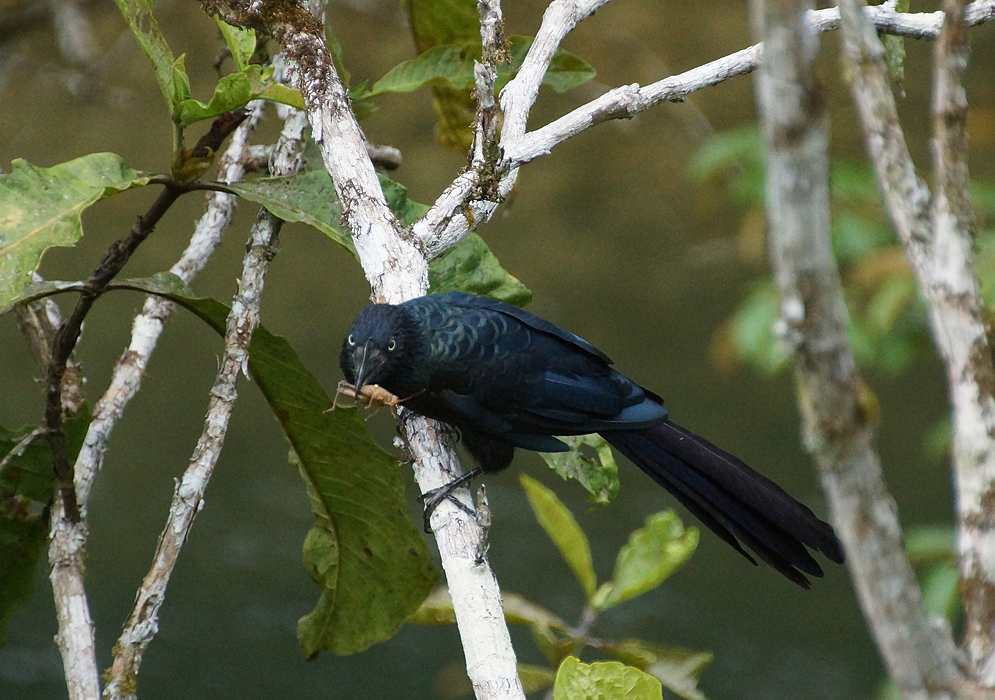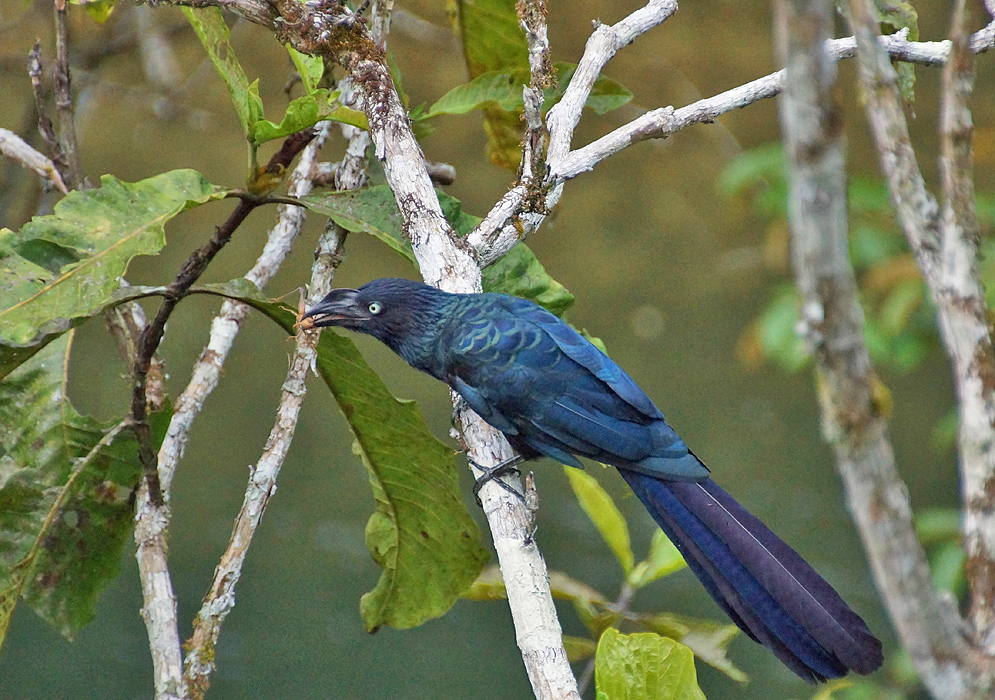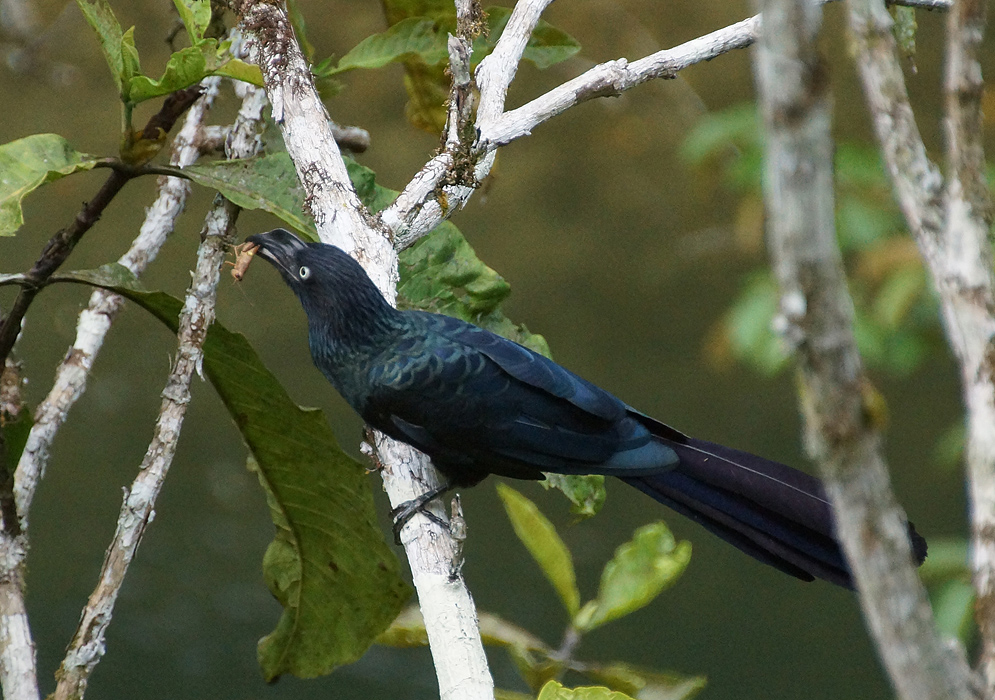This post has 11 Simple Fields-fields attached. Show fields.

The Greater Ani, also known as the Black Cuckoo, is predominantly found throughout tropical South America, extending to northern Argentina. This species is notable for its size and vivid coloration; it measures approximately 18 inches in length, with males weighing around 5.7 ounces and females slightly lighter at about 5.1 ounces. The adults are predominantly blue-glossed black with a long tail, a massive ridged black bill, and a striking white iris, while immature birds have a brown iris. The Greater Ani's vocalizations are varied and include croaking and turkey-like gobbling sounds. It favors environments such as mangrove swamps, semi-open woodland near water, and the edges of forests, demonstrating adaptability to a range of wetland habitats. This bird is also known to be a seasonal migrant in some parts of its range. Socially, the Greater Ani is a gregarious bird, typically found in noisy groups. Its diet is diverse, feeding on large insects, lizards, frogs, fruits, berries, and seeds, showcasing a broad dietary range that includes both invertebrates and small vertebrates. The species demonstrates unique breeding behaviors, where nests are built and lived in communally by two to five pairs. The nest is a deep cup lined with leaves and usually positioned 6.6 to 16.4 feet high in a tree. Multiple females lay their deep blue eggs in the communal nest and then share incubation and feeding responsibilities. Interestingly, about 15% of females engage in conspecific brood parasitism, laying eggs in the nest of another nesting group, especially if they have lost their clutch to predation.
The Greater Ani is categorized as 'Least Concern' by the IUCN. The global population is estimated to number between 500,000 and 4,999,999 mature individuals, described as 'fairly common' in its habitats. Photographed in Rio Claro, Colombia.





